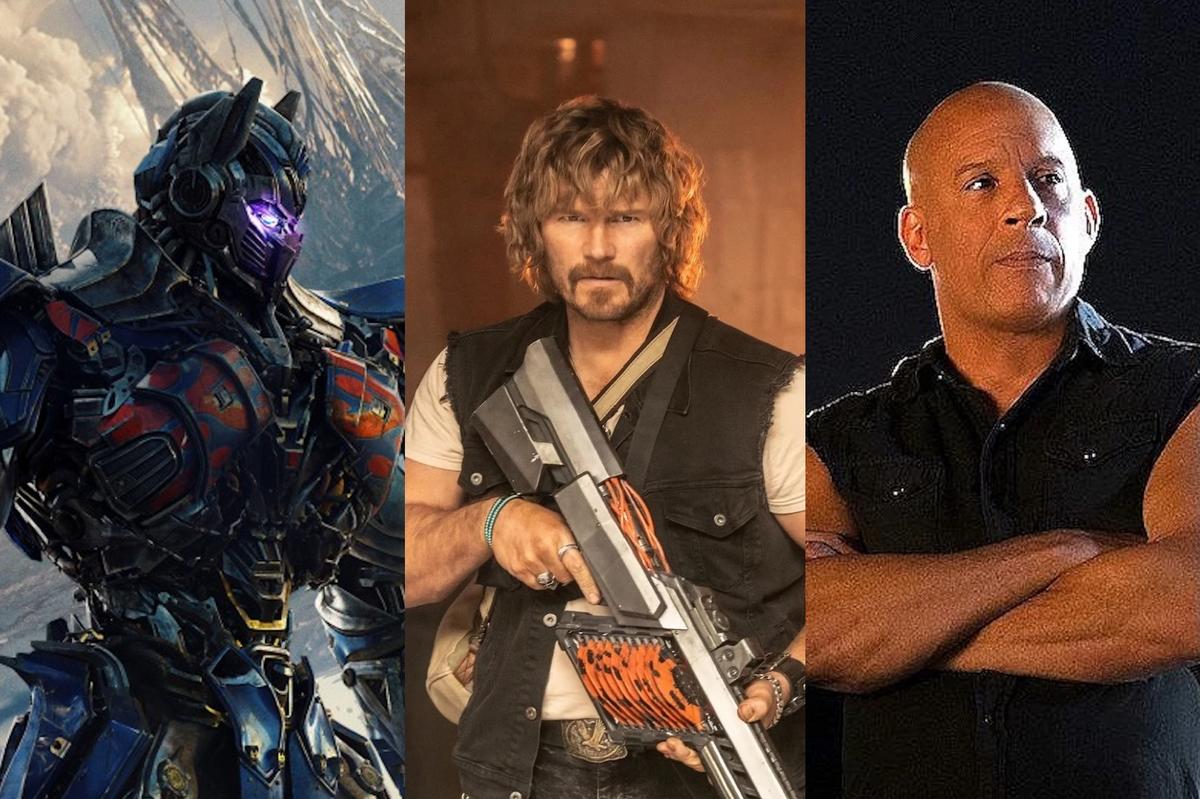
お金はすべてではないかもしれませんが、見事な風景、一流の俳優、壮大な特殊効果で映画の世界的なプロダクションを確実に促進することができますが、大きな格言は必ずしもより良い環が真実ではありません。結局のところ、シンプルさはしばしば壮大さよりも深く共鳴します。
わずかに視聴可能からほとんど悲惨なものにランクされた、高品質の予算を持つ15の大ヒット家!これらの各映画は、最低2億ドル(インフレのために調整されていない)の費用がかかりましたが、批判的にパンチされています。それでも、それらはすべて、あなたがそうするならば、すべての財政的なフロップ、またはクランカーです。しかし、このような大規模な予算で、明るい面では、関係者全員が自分の仕事をgeneしみなく補償されていることを知ることは安心しています。それは微笑むものです!
「ハリウッド会計」と呼ばれることが多いハリウッドでの金融取引は、3Dレンズを通して2Dフィルムを見るのと同じくらい混乱する可能性があることは一般的な知識です。スタジオは一般に、特に数億ドルに達する場合、予算について秘密です。したがって、次のタイトルに関連する数字を覚えておいてください。ウィキペディアから集めたもので、さまざまな貿易出版物やインタビューに基づいています。これらの数字は100%正確ではないかもしれませんが、これらの映画はすべて非常に高価だったと言っても安全です。さらに、品質面では、彼らが期待に応えていないと仮定することも合理的です。
2億ドルの予算を持つ最悪の映画
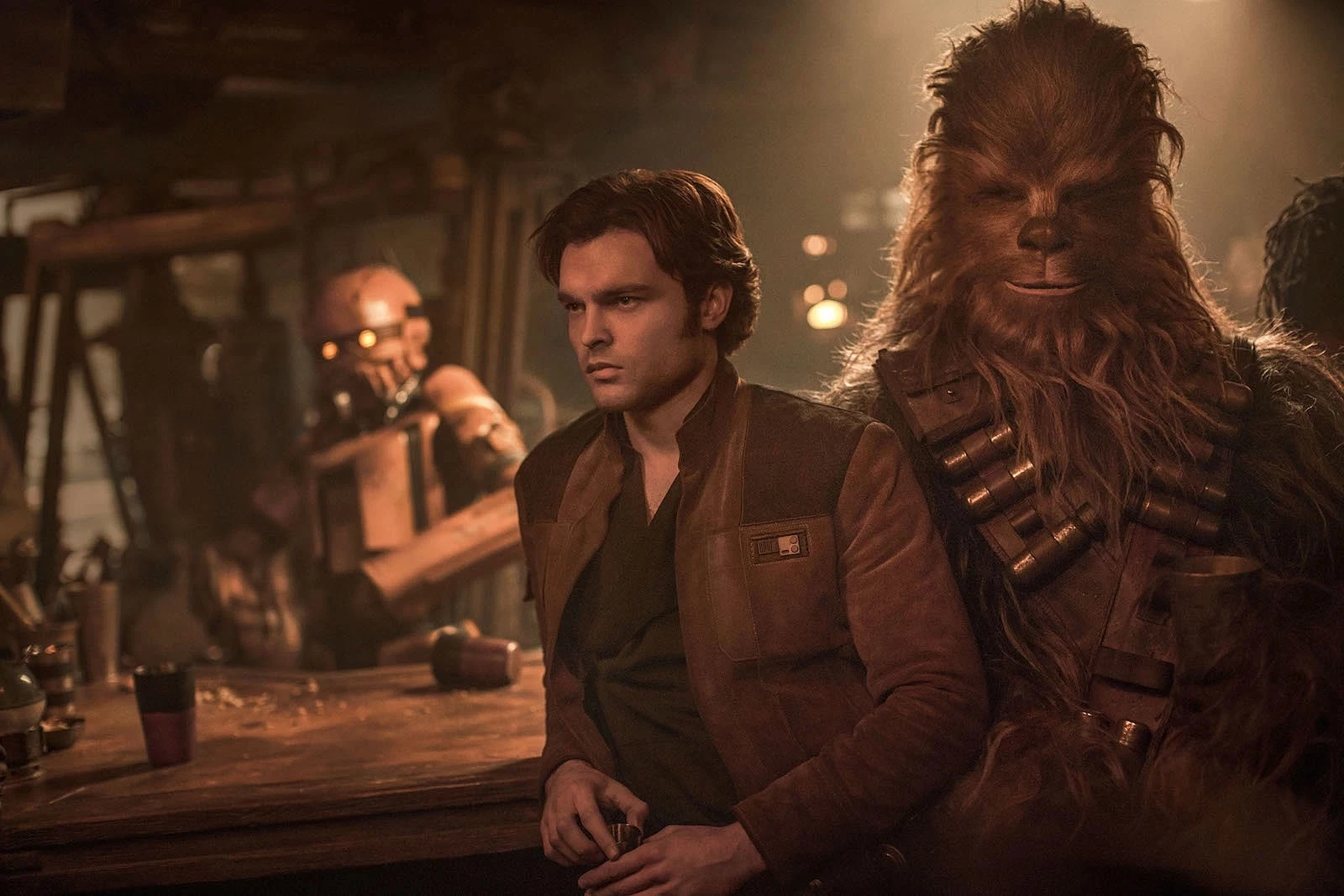
15。ソロ:スターウォーズストーリー(2018)

14。HOBBIT:The Battle of the Five Armies(2014)

13。TheFateof the Furious(2017)
「Fast&Furious」シリーズが燃料を低く走っていたという最初の兆候は、8番目の映画にまでさかのぼることができます。それは弱い拮抗薬と非論理的なプロットのひねりを紹介したため、Vin Dieselのキャラクターのドムを紹介しました。対照的に、以前の邪悪なデッカード・ショー(ジェイソン・ステイサムが演じる)は救世主に移行します。この二重の役割は、すべての元の概念を使い果たしたシリーズのヒントであり、その後の2つの映画でさらに強化される概念です。 (すぐにそれらの1つを深く掘り下げます。)
]
「Fast&Furious」フランチャイズの8回目の記事は、その弱い悪役と信じがたい陰謀のひねりを加えて、クリエイティブジュースが不足しているシリーズの兆候を示しました。VinDieselのキャラクタードムは不可解に彼の家族に反対し、最終的に彼の突然の変化を説明し、ヒーローに戻ることを説明しました。興味深いことに、以前の邪悪なデッカードショー(ジェイソンステイサムが描いた)は、代わりにヒーローに変身しました。この両面変換は、シリーズがすべての元のアイデアを使い果たしたことを意味します。これは、次の2つの映画でのみ強化される印象です。]

12。マーベル(2023)
「マーベル」の推定予算は約3億3,700万ドルです。マーベルシネマティックユニバースの最も弱いエントリではありませんが、最も混乱して激しいものかもしれません。 3人の非常に魅力的なマーベルキャラクター(キャプテンマーベルとしてのブリーラーソン、マルベル女史としてのイマンヴェラニ、モニカラムボーとしてのテヨナパリス)は、クリーウォーロードが不明確な動機で大混乱を引き起こすのを防ぐミッションに突き刺さります。俳優は強力なパフォーマンスを提供しますが、プロットは簡潔ではありますが、混oticとしており、ほとんど意味をなさない奇妙な決定に満ちています。お金だけでこれらの問題を修正することはできません。

11。スターウォーズ:スカイウォーカーの台頭(2019)

10。JurassicWorld:Fallen Kingdom(2018)
2018年までに、「ジュラシックパーク/ワールド」はおなじみのパターンに陥りました。人々(多くの場合、子供を含む)が恐竜が住む島を訪れ、少しの間a敬の念を抱き、映画が終わるまで逃げます。したがって、「ジュラシックワールド:フォールンキングダム」は、シリーズに斬新さを紹介しようとしました。
オープニングアクトでは、ストーリーラインは典型的な「ジュラシック」フォーミュラに従いますが、その後は大邸宅に転送され、映画をラプターが幽霊の役割を引き受けるタイプのホラー映画に変えます。残念ながら、この変化はまったくゲル化されず、キャラクターは他のすべての「ジュラシックパーク」の続編と同じくらいintell的ではありません。しかし、彼らは少なくとも標準から逸脱する努力をしました。

9。白雪姫(2025)
このディズニーのリメイクのスターを含む画面外のドラマを無視すると、白雪姫は悲観的な映画のままです。おそらく2億6900万ドルの予算のかなりの部分である7つの小人のCGI描写は、不自然で独特なように見えます。たとえば、ドワーフ・ドーピーは、アルフレッド・E・ノイマンのAI生成された風刺画を現代人としてモデル化しているようです。他のドワーフは、ドーピーが馬鹿だからドーピーと名付けられていないことを明確にするシーンがありますが、そもそもなぜドーピーと呼ばれるのか疑問に思います!最もばかげた側面は、白雪姫が女王を克服する方法です。たとえあなたに説明したとしても、あなたが信じないイベントです。

8。パイレーツオブカリビアン:死んだ男性はTell No Tales(2017)
Dead Men Tell No Tales” has a confusing plot that serves as a backdrop for Johnny Depp’s character’s drunken antics and action scenes. The movie spends too much time explaining the characters’ complex histories in lengthy dialogue scenes, which makes it difficult to overlook its overall confusion. For instance, a flashback scene explains why Captain Salazar hates Jack Sparrow, but it fails to address how he transforms into an undead creature after being blown up and drowned within a minute (which seems like a crucial detail). However, the same sequence does reveal how Jack Sparrow got his iconic hat. The movie is so poorly made that it makes you question why you enjoyed the original film so much.

7. Fast X (2023)

6. Transformers: The Last Knight (2017)
In Michael Bay’s last installment of the Transformers series, “The Last Knight” (2017), the narrative veered off from the franchise’s established continuity in a predictably unengaging manner. A character portrayed by Sir Anthony Hopkins delivered an unusual soliloquy, implying that human characters from previous films, notably Shia LaBeouf as Sam Witwicky, were part of a clandestine group that had worked with the Transformers for centuries. This revelation was that the transforming robots had been covertly residing on Earth for centuries, even being part of King Arthur’s Knights of the Round Table. The movie only touched upon this disclosure briefly, suggesting that subsequent Transformers films would elaborate on these hints. However, Bay left the series after “The Last Knight”, and subsequent titles focused more on prequels, largely disregarding this background. Consequently, viewers are left pondering the role of the Transformers in the War of 1812.

5. Eternals (2021)

4. Jurassic World Dominion (2022)
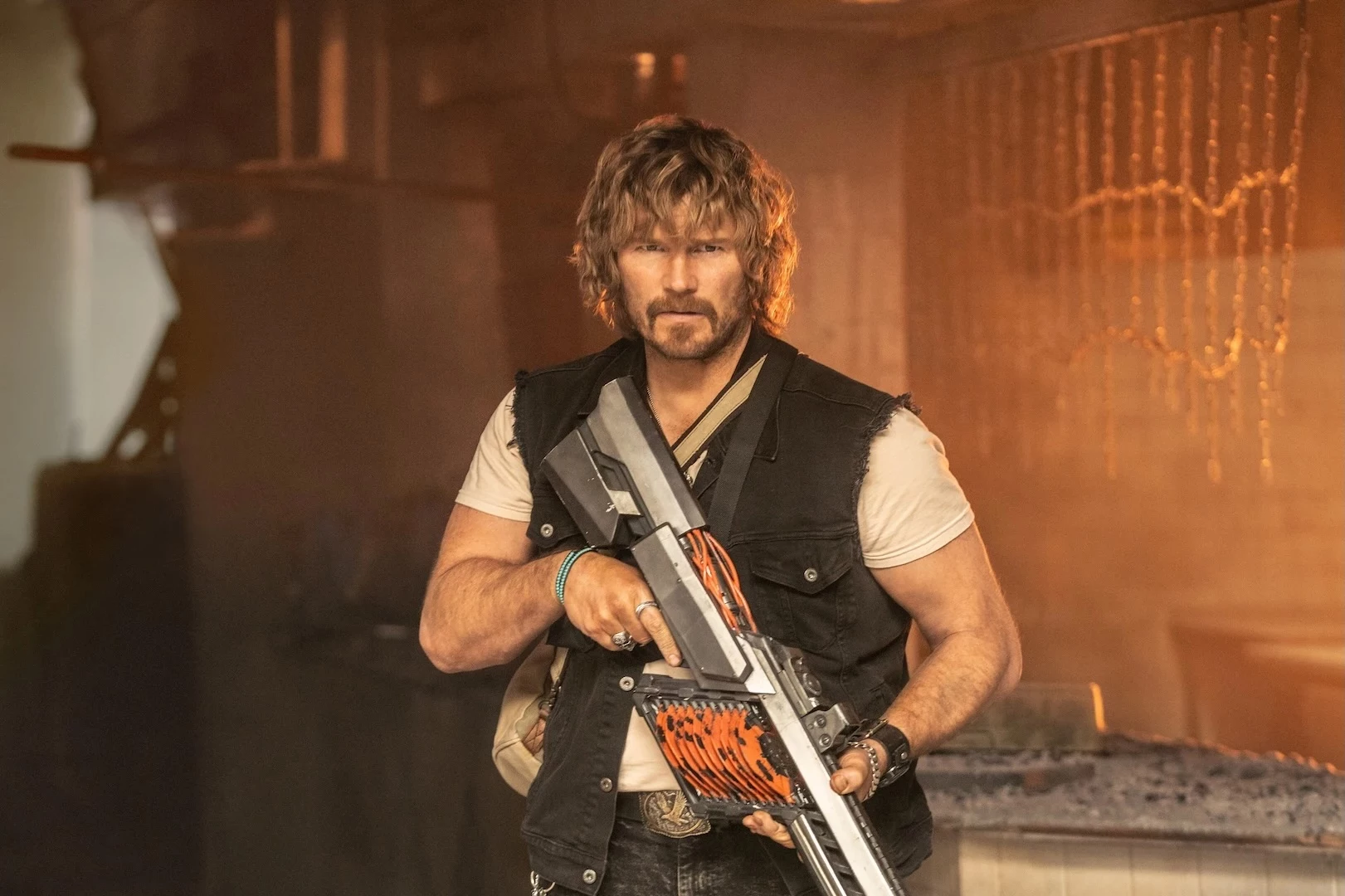
3. The Electric State (2025)
Projected Budget: Approximately $320 million for the dystopian sci-fi movie from the Russo brothers
Critics have been discussing the reported $320 million Netflix spent on this film, which many feel is excessive. Even if it had cost only half that amount, it would still seem like a bad investment. The Electric State, unfortunately, doesn’t impress visually; the character designs appear flat and unoriginal, and the overall visuals are dull and uneventful.
In the film, a young woman (played by Millie Bobby Brown) embarks on a journey through a world dominated by robots in search of her brother. She is assisted along the way by Chris Pratt, who leans heavily on his action-hero persona and an odd haircut. The central mythology (based on a book I haven’t read) is confusing, but one could perhaps overlook such peculiarities if the movie were at least visually engaging. Unfortunately, it falls short in this regard.

2. Justice League (2017)
In a turn of events that was far from ideal, the anticipated climax of an interconnected storyline, “Justice League,” fell short of expectations and marked a low point in what had once been a promising cinematic universe. Originally directed by Zack Snyder, he stepped away mid-production due to personal matters, with Joss Whedon taking over. The final product lacks the signature style of either filmmaker, exhibiting poor editing, an inconsistent tone, and a generic CGI antagonist devoid of character. (It’s hard to believe his goal is world domination, but it is!) Although Snyder’s cut is now available on Max, the original version of “Justice League” will forever be remembered as one of the weaker megablockbusters ever produced.
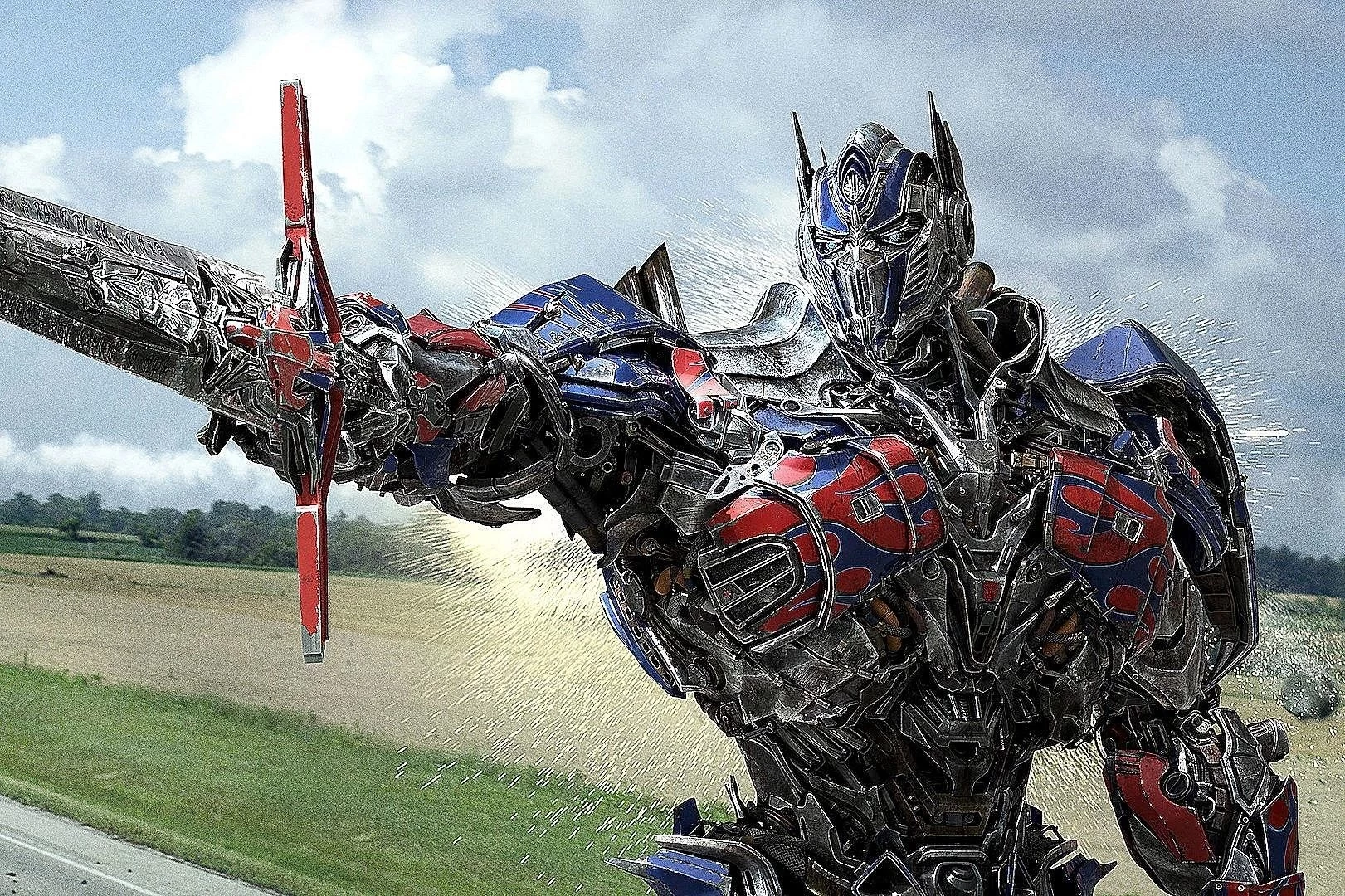
1. Transformers: Age of Extinction (2014)
Budget for Age of Extinction – $210 million
Note: Age of Extinction has several noteworthy aspects compared to other Transformers movies. It’s the longest film, and it stands out as being particularly chaotic in tone, confusing in narrative, and disjointed in editing. The story begins with the human protagonist (Mark Wahlberg, portraying a Texas-based scientist) discovering Optimus Prime within an abandoned and decaying movie theater. A character laments, “The movies nowadays! Sequels, remakes, just a bunch of junk.” However, making fun of poor sequels doesn’t excuse the fact that four sequels were produced consecutively.
20 Sequels That Were Drastically Different From the Original

Mad Max 2 (1981)
If you haven’t watched the original ‘Mad Max’, you might find it surprising that it bears little resemblance to the more recent films like ‘Mad Max: Fury Road’ or ‘Furiosa’. Unlike these high-octane productions, the first film was a small-scale Australian independent set during the breakdown of society, not in its post-apocalyptic ruins. It contains far less science fiction, action, and features minimal elements of the elaborate production design and character development that are now synonymous with ‘Mad Max’. Interestingly, Max’s family survives for much of the movie.
Many of the iconic ‘Mad Max’ elements were introduced in the sequel, ‘Mad Max 2’, which is set after the world has been devastated. In this film, Max roams the wasteland searching for gasoline. The action sequences are more intense, the stunts are more daring, and the characters are even more unhinged. (I’m pointing at you, Lord Humungus.)

Friday the 13th Part 2 (1981)
Although Jason Voorhees is now synonymous with the “Friday the 13th” series due to his iconic hockey mask, it wasn’t until the sequels that he started terrorizing Camp Crystal Lake visitors. In the original “Friday the 13th” movie, Mrs. Voorhees, Jason’s mom, was actually the killer, seeking revenge against the camp counselors for not saving her son who had drowned in the lake years earlier. (Note: He miraculously survived.) Interestingly, Jason’s hockey mask didn’t appear until “Friday the 13th Part III”, so in “Friday the 13th Part 2”, he chased people wearing just a bag with a single eye hole on his head. I can understand your rage, Jason, but I wonder if your mother would approve of you roaming around like that in public.

Star Trek II: The Wrath of Khan (1982)
As a movie enthusiast, I must confess that my first encounter with “Star Trek” on the big screen bore more resemblance to movies like “Star Wars” and particularly “2001: A Space Odyssey,” than it did to the beloved TV series. Director Robert Wise, who wasn’t a die-hard “Star Trek” fan, chose to create something grander and weightier with visually stunning effects, thanks to Douglas Trumbull, the mastermind behind the effects in “2001.” While the movie was financially successful, it was met with lukewarm responses from both casual fans and dedicated “Trek” enthusiasts alike.
In contrast, the decision for the sequel was to blend cinematic grandeur with a narrative closer to the original series, resulting in the naval-style adventure, “The Wrath of Khan,” which brought back Ricardo Montalban’s chilling character, Khan Noonien Singh. This time, Khan sought revenge against Captain Kirk and the Enterprise. The outcome was the most critically acclaimed “Star Trek” production that the franchise has ever seen.

Halloween III: Season of the Witch (1982)
In modern times, it’s hard to imagine a successful franchise like Halloween deciding to scrap all its established characters for an entirely new tale featuring fresh heroes and villains. However, that was precisely the route taken by Halloween with its third installment. It abandoned the relentless killer Michael Myers and his recurring target Laurie Strode in favor of a separate, spooky story set on Halloween. This story revolved around a doctor named Tom Atkins attempting to unravel a conspiracy involving haunted Halloween masks. If it had been successful, Halloween III could have sparked a series of unrelated Halloween sequels, all sharing only the common setting of October 31. Unfortunately, Halloween III failed at the box office, and several years later, the fourth Halloween film brought back Michael Myers for more traditional slasher-style horror.

Rambo: First Blood Part II (1985)
In the initial Rambo film titled “First Blood“, Sylvester Stallone portrays John Rambo, a troubled Vietnam veteran dealing with numerous emotional issues. Instead of triumph, the movie concludes with his capture after he turns himself in to the police following a heartfelt speech about the atrocities of war and the mistreatment he’s faced since coming home. The second Rambo film, “Rambo: First Blood Part II“, can be seen as a superhero story where Rambo appears to have overcome his mental struggles and is released from prison to return to Vietnam, this time to rescue American prisoners of war, without wearing a shirt. “First Blood “was successful; “Rambo” was phenomenal, earning $300 million globally, leading to numerous sequels and countless imitators.

Return to Oz (1985)

The Texas Chainsaw Massacre 2 (1986)
In the following scenario, film production company Cannon Films asked director Tobe Hooper to create a sequel to his groundbreaking horror movie “The Texas Chain Saw Massacre”. Having collaborated with him on various projects prior, they presumed he would make another film in the same gritty, documentary-like style as the original. However, Hooper envisioned something more brutal and humorous than its predecessor. The studio was taken aback when they first saw his version, as it deviated from their expectations (as Hooper explained in an interview for the Cannon documentary “Electric Boogaloo”).
Ultimately, the studio embraced the humor, even going so far as to design a poster mimicking that of the recent teen comedy “The Breakfast Club”. The idea was that Leatherface’s family could have their own breakfast club, but with food choices quite unlike those of Molly Ringwald and Judd Nelson. Initially, audiences were perplexed by “Texas Chainsaw Massacre 2” due to its unexpected tone, but over time, its distinct style has cultivated a dedicated cult following.
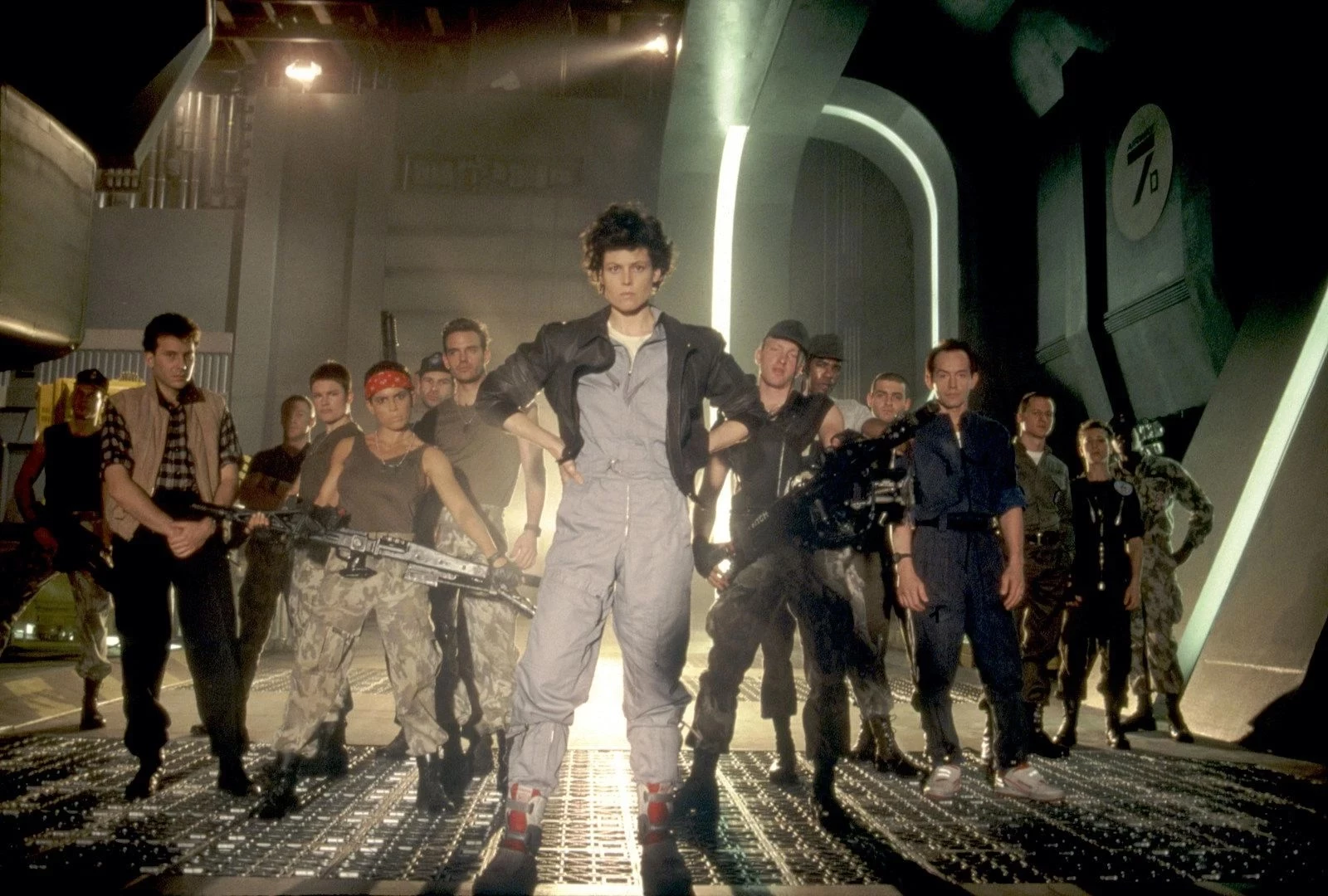
Aliens (1986)
According to James Cameron himself, the story goes that he convinced Fox Studios to let him make an “Alien” sequel by simply writing the word “alien” on a paper and adding two vertical lines to create “$ALIEN$.” This creative pitch worked, leading to one of the most impressive sequels ever made (and not the last time). Unlike Ridley Scott’s original “Alien,” Cameron’s “Aliens” is less minimalist and confined. As his titles suggest, Cameron prefers grandeur over constraint; he delivers big, bombastic scenes instead. True to its title, “Aliens” features an entire army of xenomorphs, as opposed to the single H.R. Giger monster from the original film.

Gremlins 2: The New Batch (1990)
The film “Gremlins” was so dark for a kids’ movie that it led to the creation of the PG-13 rating, as a middle ground between less intense PG films and fully adult R-rated ones. In contrast, the controversy surrounding “Gremlins 2: The New Batch” was minimal. For this sequel, director Joe Dante moved away from horror aimed at children, opting instead for a tone more akin to a live-action version of Looney Tunes cartoons. In fact, he brought in renowned animator Chuck Jones to direct new Looney Tunes segments for the film. The Gremlins in this installment were less menacing and significantly more zany; one even parodied the Dustin Hoffman movie “Marathon Man.” Moreover, the film’s rebellious spirit was evident in its breaking of the fourth wall, with appearances from famous personalities such as wrestler Hulk Hogan and film critic Leonard Maltin.

Troll 2 (1990)
In essence, “Troll 2” is not a true sequel to “Troll,” as it was initially intended and named differently. The original title was “Goblins,” but an American distributor renamed it to “Troll 2” despite its unrelated content. Interestingly, the movie doesn’t feature any trolls at all!
However, in spite of the misleading name change, “Troll 2” revolves around a family who encounter malevolent goblins in the town of Nilbog (a clever twist on the word “Goblin”). The film’s title was not altered to “Owtllort,” which is “Nilbog” spelled backwards. This was just one of the many flaws that this poorly-made movie possessed, but it eventually became a reason for its popularity among enthusiasts of bad films.

Terminator 2: Judgment Day (1991)
James Cameron often creates sequels that offer a unique twist compared to the original film. For instance, with “Aliens,” he added his own touch to Ridley Scott’s “Alien.” Similarly, with “Terminator 2: Judgment Day,” he utilized his successful box office history to secure a substantial budget, transforming the sci-fi franchise from a modest indie production into a blockbuster spectacle.
In terms of “T2,” it boasted larger special effects, more chase sequences, and more terminators than the initial film – not just Arnold Schwarzenegger’s cyborg in disguise, but also Robert Patrick’s T-1000 made of liquid metal. Essentially, “T2” set a new standard for the series; every subsequent sequel has attempted to mimic its grandeur in various ways, except for “Terminator Salvation,” which is a war movie set in the dystopian future of the saga and could also be considered an exception due to its unique approach.

Highlander II: The Quickening (1991)
The sequel to the beloved film Highlander II, unfortunately strayed far from its original formula. Rather than enhancing a successful franchise, it tarnished it with one of the worst sequels ever made. Unlike the initial film, which was a captivating blend of fantasy and action, this sequel introduced science fiction elements, transforming the hero, portrayed by Christopher Lambert, into an old man residing in a dying future. In this continuation, he and his fellow immortals were revealed to be exiled aliens from a planet called Zeist. However, this new narrative didn’t align with the first Highlander at all. In fact, audiences disliked it so much that subsequent home video releases altered the film significantly, eliminating any references to Zeist and extraterrestrials altogether.

Army of Darkness (1992)
The original “Evil Dead” was a straightforward horror film, while its sequel, “Evil Dead II,” combined graphic violence with slapstick humor reminiscent of the Three Stooges. In the third movie, “Army of Darkness,” director Sam Raimi seems to have merged the Three Stooges and Ray Harryhausen’s style, creating a unique blend. Although it retains some elements of intense horror, the third “Evil Dead” film primarily served as a platform for Sam Raimi to challenge his lead actor, Bruce Campbell, with extravagant special effects, physical comedy, and absurd situations. The result is an enjoyable and surprisingly distinct experience compared to its predecessors, which were equally delightful but significantly darker.

Batman Forever (1995)
In a stark contrast to Tim Burton’s grim and Gothic Batman films, Joel Schumacher’s Batman Forever transformed Gotham City into a vibrant, neon-lit metropolis filled with eccentric gangs, featuring characters like Jim Carrey’s maniacal Riddler, Tommy Lee Jones’ equally cackling Two-Face, and a seductive psychiatrist (Nicole Kidman) who harbored intense feelings for Batman (Val Kilmer, taking over from Michael Keaton). The Bat suits became increasingly flamboyant, and the movie even ended with a love song in the credits (Seal’s “Kiss From a Rose”). This film was so flamboyant and exaggerated that it borderlined on being a satire of Tim Burton’s Batman. Interestingly, Batman Forever outperformed Batman Returns at the box office by earning $70 million more.
While Tim Burton’s Batman movies were dark and Gothic, Joel Schumacher’s Batman Forever made Gotham City bright and colorful with its quirky gangs, outrageous characters like Jim Carrey’s Riddler and Tommy Lee Jones’ Two-Face, and a seductive psychiatrist (Nicole Kidman) who fancied Batman. The costumes for the Batman character became more extravagant, and the movie ended with a love song in the credits. This film was so over-the-top that it felt like a parody of Tim Burton’s Batman movies, and it made a lot more money at the box office than his previous Batman film.

Mission: Impossible II (2000)
When John Woo became part of the Mission: Impossible series, he gave it his unique touch. Tom Cruise transformed from a neatly groomed man exposing spy plots to a daring character with long hair, dual pistols, and a knack for performing high-octane action sequences in slow motion amidst swirling doves. Many Mission: Impossible fans consider M:I-2 as the weakest entry in the series. However, if judged by American John Woo action movie standards, it’s quite fulfilling.

The Chronicles of Riddick (2004)
In the time period following the release of “The Fast and Furious”, the film “The Chronicles of Riddick” was produced as an expansive science fiction vehicle for Vin Diesel. Although it was largely overlooked as a sequel, its connection to 2000’s “Pitch Black” is undeniable. Prior to “The Fast and Furious”, this movie was primarily a small-scale horror film featuring a diverse group of stranded space travelers (including Diesel’s character Riddick) on an alien-infested planet. After the success of “The Fast and the Furious”, Diesel and director David Twohy were given the opportunity to elevate their aspirations, as well as their budgets, for a sequel that shifted focus from survival horror in space to a full-blown outer space war epic.

The Devil’s Rejects (2005)
In the follow-up, “The Devil’s Rejects”, Rob Zombie takes a drastic turn from the original “House of 1000 Corpses”. While the first movie is a traditional slasher with teenagers being hunted by a psychotic family, the sequel flips the script, transforming these killers into complex anti-heroes. The story follows their relentless pursuit by the law for past crimes, painting them as the protagonists in an unforgiving world. I personally find “The Devil’s Rejects” a compelling (albeit grim) film. However, given its stark contrast with “House of 1000 Corpses”, it’s not unusual to encounter fans of the first movie who don’t appreciate the sequel.

Cars 2 (2011)
Sure thing!
Initially, Cars was a film that revolved around sentient, conversing automobiles primarily competing in races, with some Doc Hollywood elements mixed in for added flavor. However, the sequel took an unexpected turn by transforming Mater the Tow Truck (portrayed by Larry the Cable Guy) from a supporting character to a key player. But why is Mater a spy in this movie? And why do these talking cars require bathroom breaks or consume wasabi? Furthermore, what’s the purpose of spies (or eating food) among sentient vehicles? These questions remain unanswered for me.
This version aims to maintain the original meaning while using simpler and more natural language for easy understanding.

Split (2016)
In this unusual scenario, a film was cleverly kept under wraps as a sequel and revealed it only at the climax, creating a surprising twist. The mastermind behind this plot twists was M. Night Shyamalan. It wasn’t until you reached the end of ‘Split’ that you discovered its antagonist, “The Horde,” resides in the same fictional world as Bruce Willis’ character David Dunn from Shyamalan’s 2000 superhero film ‘Unbreakable’. While ‘Unbreakable’ was more of a suspenseful drama, ‘Split’ leaned towards horror. The characters from both movies were brought together in the sequel ‘Glass’, wrapping up this interconnected trilogy.

Bring It On: Cheer or Die (2022)
Following numerous sequels of “Bring It On” that maintained its humorous charm, producers decided to switch things up with the seventh installment, “Cheer or Die.” This film took a turn into horror as members of a high school cheerleading squad are mysteriously killed one by one on Halloween. For the next “Bring It On,” let’s explore an entirely different genre – how about a sci-fi movie titled “Bring It On: In Space, No One Can Cheer You Scream“? This film will revolve around the first cheerleading team to venture into space.
- キム・ターンブルとは何者で、どのようにしてロミオ・ベッカムと出会ったのでしょうか?彼の素晴らしい新しいガールフレンドについて知っておくべきことすべて
- JPY KRW 予想・見通し・の予想
- エラ・マイ、妊娠を世間に隠してNBAスターのジェイソン・テイタムとの間に第一子を出産
- 『秋が来るとき』レビュー: フランソワ・オゾン監督の、田舎での隠居生活を紐解きながら描いた一見穏やかな作品
- マーベル・スタジオ、6本のMCU映画がフェーズ6で公開されることを確認
- 結合双生児ブリタニーとアビー・ヘンゼル、夫のジョシュが新しい写真に登場
- 「フロム」シーズン3の最終回でジル・グリーンに敬意を表
- ケルシー・グラマーの暗い秘密:コカイン、酒、そして彼の妹の殺人
- 『アウターバンクス』シーズン5ではJJの衝撃的な降板を受けてさらに悪党どもが殺されるのか?
- 911ローンスターでグレースに何が起きたのか?シーズン5終了の恐怖の説明
2025-05-14 20:33